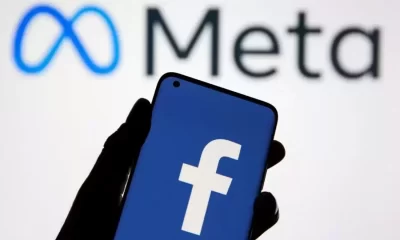Business
Facebook Owner Meta Axes Another 10,000 Jobs

On Tuesday, Facebook owner Meta announced a new round of layoffs as part of the company’s “year of efficiency,” as the US tech sector continues to contract due to Biden inflation.
In an email to employees, Mark Zuckerberg stated that Meta would cut 10,000 jobs over the next few months, focusing on middle management, with 5,000 other positions remaining unfilled. The layoffs follow an 11,000-job cut announced by the company in November.
“This will be difficult, and there is no way around it. It will imply saying farewell to talented and passionate colleagues who have contributed to our success, “According to Zuckerberg.
Meta’s recruitment department will be the first to suffer as the company officially ends the hiring spree that occurred when big tech ramped up operations to meet high demand during the coronavirus pandemic.
The tech and business departments will be affected, and “in a small number of cases, it may take until the end of the year to complete these changes,” according to Zuckerberg.
Zuckerberg warned analysts in January that the company’s “management theme for 2023 is the ‘Year of Efficiency,'” and that he would focus on making the company “a stronger and more nimble organization.”
Meta had a difficult 2022 due to a deteriorating economic climate, which forced advertisers to cut back on marketing, and Apple’s data privacy changes limited ad personalization.
The company is also under fire for betting on the metaverse, a virtual reality world that Meta believes will be the next online frontier.
The company’s share price dropped by an astounding two-thirds in a year due to the problems last year, but the stock recovered in 2023, with investors satisfied by Zuckerberg’s pledge to run a leaner company.
Following the announcement of the latest job cuts, Meta’s stock price increased by 5%.
Meta’s CEO and founder stated that he “will flatten our organization by removing multiple layers of management,” implying that many managers will be ordered to become “individual contributors.”
Zuckerberg said he was pleasantly surprised by the advantages of running a more tightly organized operation where “many things have gone faster” due to eliminating lower priority projects.
“A leaner organization (sic) will complete its highest priorities more quickly. People will be more productive, and their jobs will be more enjoyable and rewarding, “He stated.
 Facebook, Meta Axing Middle Managers a Big Mistake
Facebook, Meta Axing Middle Managers a Big Mistake
Few jobs in corporate America are more thankless — or more mocked — than middle management. They’ve long been derided as petty, powerless, thumb-twiddling bureaucrats who enforce the rules, crack the whip, and stamp out any vestige of creativity or self-initiative. Middle management, so the thinking goes, is for mediocre people.
However, as businesses prepare for tougher times, the assault on middle managers has gained momentum. Mark Zuckerberg is removing layers of management at Meta, demoting many supervisors to the ranks of the supervised. Shopify is also restructuring its corporate hierarchy, resulting in fewer managers. In addition to their supervisory duties, Elon Musk has directed Twitter’s engineering managers to begin writing “a meaningful amount” of code themselves.
CEOs claim they are laying off employees in the name of efficiency. Mark Zuckerberg explained his decision: “I don’t want managers managing managers, managing managers, managing managers, managing managers, managing the people who are doing the work.” His rhetoric is part of a decades-long effort to reduce the number of middlemen in corporate America’s sprawling bureaucracy. Reduce your overhead. Dismantle silos. Remove the red tape. Create a “more fun place to work,” in Zuckerberg’s words. Isn’t it all wonderful?
Except for one thing: Middle managers are the ones who make large organizations function. According to studies, they have a far greater impact on a company’s overall performance than senior executives and a greater impact on the bottom line than the teams they supervise. Businesses are cutting the people they need to weather the economic uncertainty by eliminating middle managers amid an unprecedented shift to hybrid work. They make it more difficult for the remaining managers to succeed. And they’re sending a strong message to talented would-be bosses: Don’t be one.
“You can have a great vision and a great strategy, but if you don’t have managers who create the culture you want to be, none of that stuff will get done,” says Jim Harter, Gallup’s chief scientist for workplace management. “It’ll be all uphill the whole way. Leaders’ jobs are made much easier by effective managers.”
The Big Flattening
There are two archetypes of management structures: hierarchical and flat. Tall organizational trees cascade down ever-descending layers of management in hierarchical organizations. Flat organizations have shorter organizational trees with fewer intermediaries.
Because they must establish a clear chain of command, large corporations tend to be more hierarchical. However, over the last few decades, large corporations have attempted to become flatter — and some, like Zappos, have attempted to do away with hierarchies entirely. According to a study of 300 large corporations, the number of managers layered between CEOs and division heads decreased by more than 25% between 1986 and 1998. Meanwhile, the average number of people reporting directly to the CEO has nearly doubled. The Great Flattening had begun.
The war on middle managers appears to have yielded some of the desired results: According to one study, companies with fewer organizational layers delivered products to customers faster. However, the trend resulted in a culture that dismissed middle managers as useless, despite extensive research showing that the good ones make significant contributions to their organizations.
Consider a series of Gallup studies on employee engagement—a measure of how involved and enthusiastic employees are about their jobs, linked to higher profitability, lower turnover, and lower absenteeism. Across more than 50,000 teams, Gallup’s researchers honed in on a perplexing finding: Even within the same company, some teams performed significantly better in engagement than others. The findings suggested that team-specific dynamics, rather than organizational-wide ones, were key to how employees felt about their jobs.
So the researchers dug even deeper. They were surprised to discover that direct supervisors accounted for 76% of the variation in team engagement, while executives accounted for only 11%. “Your immediate manager has far more influence on your engagement than senior leadership,” Harter says. “It was astonishing how much variation there was across these manager-led teams and how much managers influenced organizational engagement.”
Top executives may be surprised to learn they are worth less than middle managers. However, if you consider your own experience as an employee, it probably makes sense. The person with the greatest impact on your day-to-day work life is not the CEO, who is unlikely to know your existence. Your immediate boss knows to be gentle with you right now because your marriage is crumbling, who tailors their feedback to you in a way that makes you open to change and reshapes assignments from higher-ups to match your strengths and ambitions.
Middle managers, however, underappreciated, frequently make or break how we see and do our jobs. That’s why, according to a recent survey conducted by UKG, a workforce-software provider, employees said their supervisor had just as much of an impact on their mental health as their spouse — and even more than their therapist.
Consider another study that examined middle managers’ impact on business performance. Wharton management professor Ethan Mollick examined two jobs in the gaming industry: designers and producers. Designers are the innovators who create, invent, and build games. Producers are the suits who ensure that projects are completed on time and within budget.
Mollick expected to discover that the innovators’ creative output was more important than the managers’ bureaucratic work. However, the opposite was true: producers accounted for 22% of revenue differences across games, while designers accounted for only 7%. (According to another study, top executives were even less important, accounting for less than 5% of the total.) “High-performing innovators alone are insufficient to generate performance variation,” Mollick concluded. “Rather, individual managers must integrate and coordinate the innovative work of others.”
Managers overseeing managers
It’s a message worth remembering, especially in Silicon Valley, where brilliant coders are worshipped as gods. According to studies, a top programmer can produce as much work as 20 average ones — a statistic that is frequently used to justify paying exorbitant salaries to attract the best engineers. That’s why the tech industry established a separate advancement path for programmers: to provide a way for superstars to earn raises and promotions without becoming managers.
However, by idolizing top performers so much, Silicon Valley devalued the less glamorous role of managers — the people who get the genius coders’ work out into the world. When Elon Musk was asked to name the most “messed up” aspect of Twitter last October, he replied, “There appear to be ten people managing for every one person coding.” Similar disdain can be heard in Zuckerberg’s words. When he mentioned not wanting “managers managing managers,” he left out the most common middle-manager trope: that, unlike employees who are “doing the work,” middle managers aren’t doing anything.
It’s an assumption that an experienced management consultant I spoke with immediately recognized when she accepted a supervisory position at a tech firm. Even though she was in charge of a team, she was told almost immediately that she should spend most of her time working on her projects. Her performance reviews focused on her work rather than her accomplishments as a manager. When she was laid off a few months ago, she wondered if it was because she prioritized developing her team over grinding out her work.
“I believe that spending your time coaching, leading, and developing people is a worthwhile pursuit in and of itself,” she said. “If you want to do those things well, make time for them. People management is a job. But I don’t believe the company’s leadership recognized or valued that. That is not well received in the tech industry.”
People management takes far more time than corporate leaders realize. According to Gallup, the maximum number of direct reports most managers can effectively supervise is ten. Any more than that, according to Harter, it becomes difficult to have meaningful weekly conversations with employees. (At Tesla alone, Musk reportedly has 28 people reporting to him.) Companies like Meta risk burdening their remaining supervisors with teams too large to manage effectively as they shed middle managers. For the time being, the companies may save money on overhead. However, they will struggle with retention and lose revenue in the long run.
Burnout is beginning to show up in the ranks of middle managers. According to the UKG survey, 42% of middle managers are frequently or always stressed, a higher percentage than either frontline workers or C-suite executives. More than half of those polled said they wished they had been warned not to take their current job. That’s because they’re under increasing pressure from their bosses above, who want them to increase productivity while laying off employees, and from their employees below, who are irritated by having to return to work.
Companies would do better by giving middle managers the recognition they deserve and assisting them in becoming more effective in the emerging post-pandemic workplace rather than eliminating them or burdening them with additional work. According to Harter, businesses that unlock the hidden value of middle managers are more likely to weather the current economic turmoil. “It’s something businesses can use, especially in these more difficult times,” he says. “A lot of it will depend on how they upskill managers.”
Business
A Former OpenAI Leader Says Safety Has ‘Taken A Backseat To Shiny Products’ At The AI Company
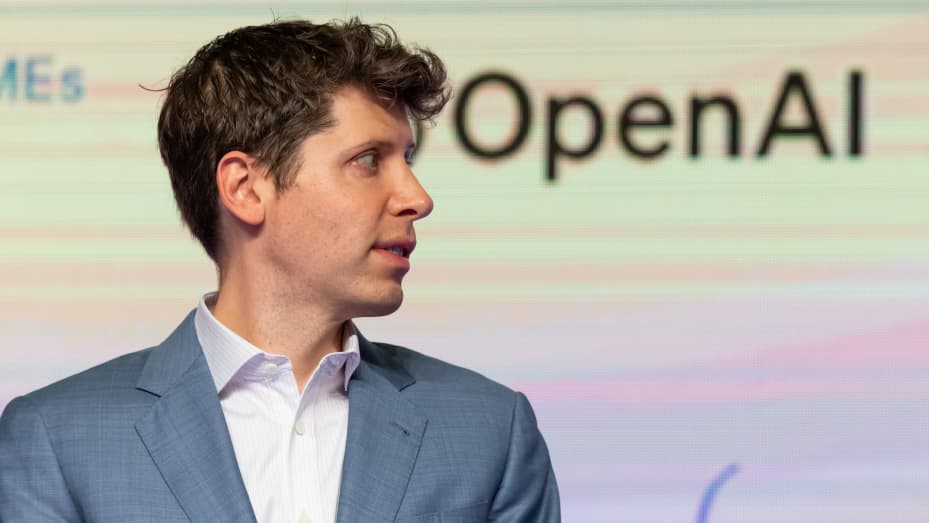
A former OpenAI executive who quit earlier this week warned Friday that safety has “taken a backseat to shiny products” at the influential artificial intelligence firm.
Jan Leike, who led OpenAI’s “Superalignment” team with a business co-founder who also left this week, stated in a series of posts on the social media platform X that he joined the San Francisco-based startup because he believed it was the ideal place to conduct AI research.
“However, I have been disagreeing with OpenAI leadership about the company’s core priorities for quite some time, until we finally reached a breaking point,” wrote Leike, who resigned on Thursday.
AP – VOR News Image
A Former OpenAI Leader Says Safety Has ‘Taken A Backseat To Shiny Products’ At The AI Company
By training, Leike, an AI researcher, feels there should be a greater emphasis on preparing for the next generation of AI models, including safety and studying the societal consequences of such technology. He stated that developing “smarter-than-human machines is an inherently dangerous endeavor” and that the company “is shouldering an enormous responsibility on behalf of all of humanity.”
“OpenAI must become a safety-first AGI company,” stated Leike, using the shortened term of artificial general intelligence, a futuristic concept of robots that are as generally intelligent as humans or can do many things as well as people.
Open AI CEO Sam Altman responded to Leike’s postings, saying he was “super appreciative” of his efforts to the firm and was “very sad to see him leave.”
VOR News Image
A Former OpenAI Leader Says Safety Has ‘Taken A Backseat To Shiny Products’ At The AI Company
Leike is “right, we have a lot more to do; we are committed to doing it,” Altman added, promising to publish a lengthy post in the coming days
The company also stated on Friday that it has disbanded Leike’s Superalignment team, which was formed last year to focus on AI threats, and will integrate the team’s personnel into its research operations.
Leike resigned after OpenAI co-founder and chief scientist Ilya Sutskever announced his departure on Tuesday after nearly a decade with the company. Sutskever was one of four board members who voted to remove Altman last October, only to quickly reinstall him. Sutskever informed Altman that he was fired last November, although he later admitted he regretted doing so.
VOR News Image
A Former OpenAI Leader Says Safety Has ‘Taken A Backseat To Shiny Products’ At The AI Company
Sutskever stated that he is working on a new project that is meaningful to him but did not provide further specifics. He will be succeeded by Jakub Pachocki as head scientist. Altman described Pachocki as “also easily one of the greatest minds of our generation” and stated that he is “very confident he will lead us to make rapid and safe progress towards our mission of ensuring that AGI benefits everyone.”
On Monday, OpenAI demonstrated the most recent version of its artificial intelligence model, which can emulate human cadences in vocal responses and even attempt to discern people’s moods.
SOURCE – (AP)
Business
Under Armour Was A Real Threat To Nike. Now It’s Fighting To Stay Relevant
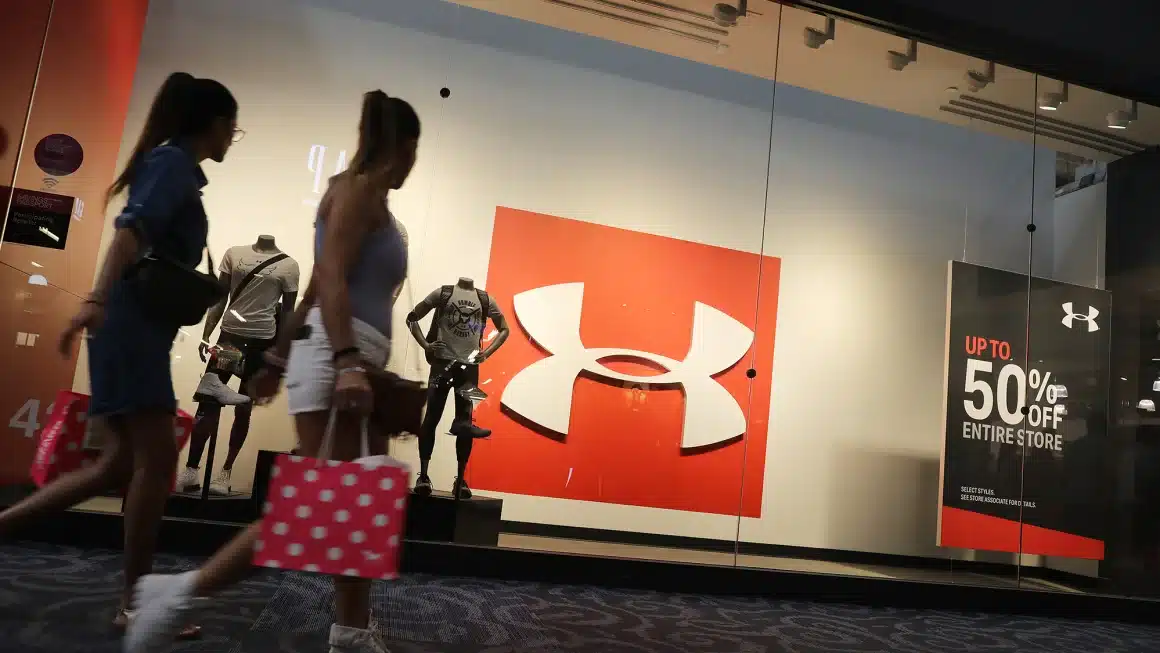
It was previously seen as a viable competitor to Nike. But at the moment, Under Armour, founded by a 23-year-old former collegiate athlete, is struggling to “just do it.”
Instead, the brand championed on the basketball court by Stephen Curry and on the golf course by Jordan Spieth is now struggling — badly — to find its footing in an increasingly competitive and crowded sportswear marketplace for regular people, where younger shoppers are more enamored with newer entrants like Hoka and On running shoes.
Under Armour’s annual sales have been lackluster at best in recent years, and the stock has fallen 88% since its all-time high in 2015. According to industry observers, the company is mired in an uncomfortable mix of challenges, including an identity crisis, many management disputes, neglecting emerging market trends to its harm, and a rapid succession of CEOs.

CNN – VOR News Image
Under Armour Was A Real Threat To Nike. Now It’s Fighting To Stay Relevant
One of them is the company’s creator, Kevin Plank, who has returned as CEO for the second time after being removed in 2019. Like Starbucks founder Howard Schultz and Disney CEO Bob Iger, Plank seeks to right the ship at Under Armour.
“When Under Armour was growing at 20% or higher, people saw it as a legitimate competitor to Nike,” said David Swartz, senior equities analyst at Morningstar, in an interview with CNN.
“It was like On or Hoka a decade ago. The upstart athletic brand was making significant advances against Nike, the industry’s main brand. People regarded it as a firm that could break through and take Nike’s market share among serious athletes,” Swartz explained. “That actually did happen for a while, but then that didn’t last.”
Plank founded Under Armour in 1996 to provide what the name implies: a protective layer of clothing worn by competitive athletes sweating it out in the heat of the game.
The initial product was “The Shorty,” a fitted T-shirt composed of moisture-wicking fabric that professional athletes could wear beneath their uniforms to stay dry. The famous Under Armour “U” and “A” logo was deliberately placed on the neckline to keep it visible.
The T-shirt finally propelled the brand to the masses after gaining popularity among elite sportsmen immediately. Under Armour went public in 2005 due to the startup’s rapid success. Its early tagline was “Protect This House.”
By 2010, the company had surpassed $1 billion in revenue. Five years later, revenues topped $4 billion. But then the impetus began to ebb.
Prolonged period of discomfort.
Under Armour has struggled for the past eight years, and the situation does not look to improve.
The company announced a corporate restructuring on Thursday, following a 10% drop in North American revenues in the most recent quarter. The corporation has issued a bleak prediction for the current fiscal year, expecting sales to fall 15% to 17%. Layoffs would be part of the attempt to right the ship, although officials did not say how many people would lose their jobs.
Under Armour has launched a $500 million share buyback program to reward shareholders.
During the earnings call on Thursday, Plank stated that he will lead a business reset that focuses on selling fewer but more innovative products to meet the needs of athletes, significantly accelerating product development, refocusing on the men’s apparel category, and reducing product discounts
“We’re just doing too much stuff. There are too many items and projects. To rebuild this brand, we must be laser-focused and prioritize what needs to be done so that our staff know exactly what to do and have a clear definition of success for them,” Plank added.

CNN – VOR News Image
Under Armour Was A Real Threat To Nike. Now It’s Fighting To Stay Relevant
It cannot be denied that management concerns have plagued the company for years, Swartz stated.
“The company has essentially had five CEOs in the past five years, if you count Kevin Plank twice,” stated Swartz. Plank was announced as CEO again in March, following Stephanie Linnartz’s brief year-long stint.
During the analyst call Thursday, Plank admitted that regular C-suite churn has significantly hindered success.
“With several CEOs and heads of product, marketing in North America over the past half-decade, ongoing turnover of critical leadership has been central to our inability to stay agile and decisive,” he stated.
According to Swartz, “things really started to fall apart” at Under Armour beginning in 2016. A major problem developed when an essential distribution route for the company went bankrupt and closed stores.
Under Armour’s products are mostly offered through athletic goods merchants and department stores, such as Macy’s and Kohl’s, as well as online.
“When Sports Authority declared bankruptcy in 2016, Under Armour suffered greatly. It was a significant customer for the brand, as was Dick’s Sporting Goods,” Schwartz stated.
UCLA sued Under Armour in 2020 after terminating a $280 million sponsorship agreement. The lawsuit claimed that Under Armour was struggling before Covid-19 and used the epidemic as an excuse to withdraw from the agreement.
According to Eric Smallwood, president of Apex Marketing Group, a sports and entertainment organization that examines sponsorships and advertising campaigns, the brand’s long-term celebrity-brand collaborations are performing well.
“Under Armour’s partnership with ‘The Rock’, Dwayne Johnson, has been quite successful. They’ve expanded into the United Football League, which Johnson co-owns,” Smallwood explained. “Their uniforms are Under Armour.”
According to Smallwood, the brand is also making advances in golf, and the Stephen Curry alliance has kept it visible in the basketball world.

CNN – VOR news Image
Under Armour Was A Real Threat To Nike. Now It’s Fighting To Stay Relevant
In 2013, basketball superstar Stephen Curry, probably the finest shooter in history, notably signed for Under Armour over Nike. Meanwhile, Joel Embiid, the brand’s other prominent NBA star, left Under Armour in 2023, just months after being awarded the league’s most valuable player.
Embiid inked a sneaker contract with Skechers last month. Under Armour reportedly bid strongly for WNBA star Caitlin Clark, who is expected to sign with Nike.
“The bottomline for Under Armour is for the brand to be clear about its identity,” he stated. “Are they a shoe company?” Are they an apparel company? Everyone else eventually replicated their moisture-wicking undershirt. Then, perhaps they experienced an identity crisis. It will come down to determining if they want to expand into a lifestyle brand or stick with performance-based products.
SOURCE – (AP)
Business
Boeing Whistleblower Died By Suicide, Police Investigation Reveals
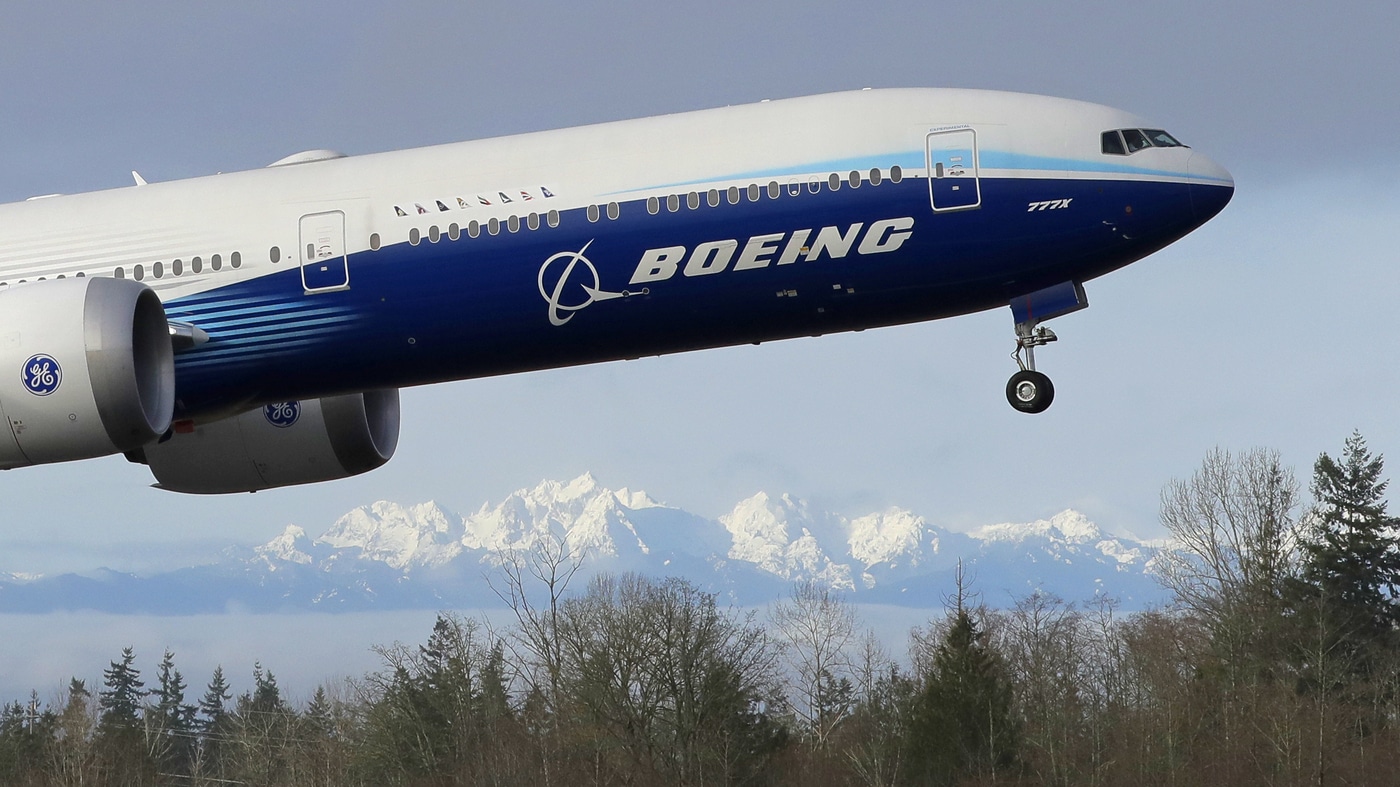
Boeing whistleblower John Barnett committed suicide, according to a police report released on Friday, bringing an investigation into the shocking death of a longtime employee who raised concerns about the airplane manufacturer’s safety and production standards – and who sued the company, alleging illegal retaliation against him.
Barnett, 62, was discovered dead in a vehicle on March 9 from a self-inflicted gunshot wound in Charleston, South Carolina. Officers were summoned to perform a welfare check on Barnett at a Holiday Inn after he failed to appear for a deposition in his complaint against Boeing, according to his lawyers and a police incident report.

Boeing- VOR news Image
Boeing Whistleblower Died By Suicide, Police Investigation Reveals
When responding officers arrived, they discovered Barnett deceased in the driver’s seat of a truck in the parking lot. He was clutching a firearm. The initial police report also stated a message in the truck.
However, in a statement released after his death, Barnett’s lawyers stated that his deposition was nearing completion and that he appeared to be in high spirits.
“We saw no sign that he would commit suicide. “No one can believe it,” his attorneys, Robert Turkewitz and Brian Knowles, stated in a statement on March 12. “The Charleston police need to investigate this fully and accurately and tell the public what they find out.”
The Charleston Police Department announced Friday that the Charleston County Coroner’s Office had decided that Barnett had committed suicide.
The inquiry revealed that Barnett was shot in the head at close range, with the firearm located in his right hand. A notebook was also discovered in the front seat of the car, indicating that “he was going through a period of serious personal distress,” according to a police press statement.
Police provided CNN with a photograph of a note left in the car, which had several nasty statements addressed at Boeing.
“As this investigation comes to a close, we should not forget it represents the loss of Mr. Barnett’s life,” police stated. “We extend our deepest sympathies to his family during this difficult time and hope they continue to find the strength to persevere in absence.”
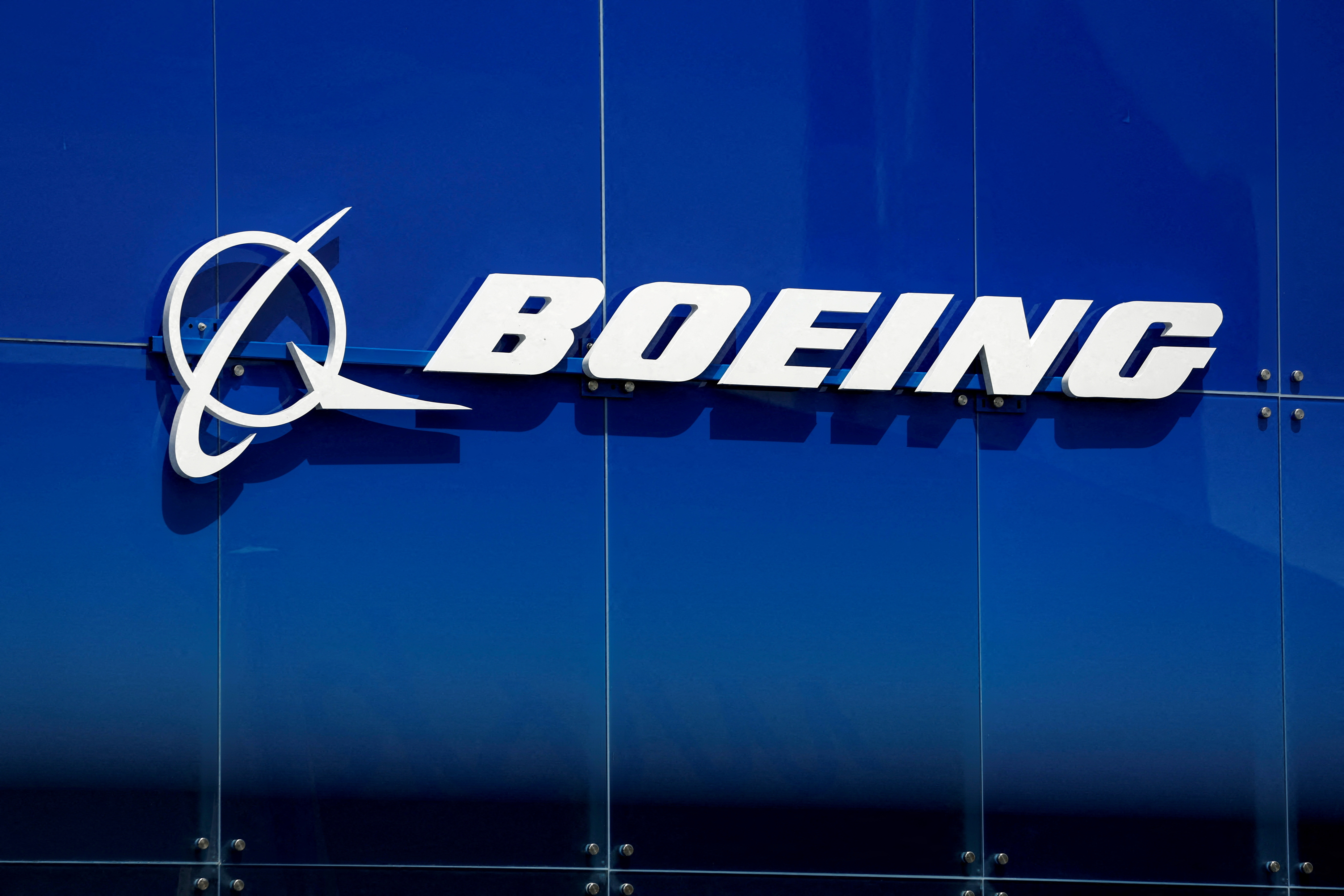
Boeing: Image Reuters
Boeing Whistleblower Died By Suicide, Police Investigation Reveals
Boeing did not immediately respond to requests for comment. In March, the firm expressed its sadness at Barnett’s death.
“Our thoughts are with his family and friends,” the business stated.
Barnett, a former quality manager who had worked at Boeing for decades, told the New York Times in 2019 that he had uncovered dangerous wiring clusters in Boeing’s manufacturing procedures that could have resulted in an aircraft’s catastrophic failure if severed by surrounding metal slivers.
“As a quality manager at Boeing, you’re the last line of defense before a defect makes it out to the flying public,” Barnett told the New York Times. “And I haven’t seen a plane out of Charleston yet that I’d put my name on saying it’s safe and airworthy.”
In a message issued to the facility’s employees and sent to CNN at the time, Brad Zaback, a site leader at the plant and general manager of the 787 program, stated that the Times’ coverage “paints a skewed and inaccurate picture of the program and of our team (at the plant).”

Boeing 777- AP Image
Boeing Whistleblower Died By Suicide, Police Investigation Reveals
Zaback, who said the Times denied an invitation to tour the company, stated that “quality is the bedrock of who we are” and that the plant produces “the highest-quality airplanes.”
Since Barnett’s original public warnings about Boeing, the corporation has had multiple high-profile safety and quality issues, including the explosion of a door stopper on a 737 Max shortly after takeoff last January. This prompted the US Justice Department to announce that Boeing could face criminal charges for its history of safety issues.
SOURCE – (AP)
-

 Sports5 months ago
Sports5 months agoSaints’ Aggressive Play-Calling Ends Up Coming Back To Hurt Them In Loss To Rams
-

 Business5 months ago
Business5 months agoNike Says It Will Cut $2 Billion In Costs In A Major Warning For Consumers
-

 Business5 months ago
Business5 months agoFederal Court Revives Lawsuit Against Nirvana Over 1991 ‘Nevermind’ Naked Baby Album Cover
-

 News5 months ago
News5 months agoThe Rise of Woke Ideology in Western Culture
-
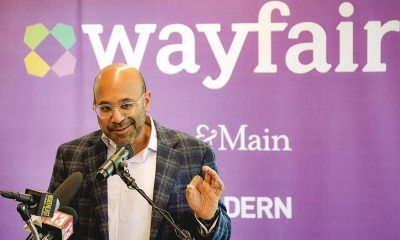
 Business5 months ago
Business5 months agoWayfair CEO: Employees Need To Work Longer Hours, After Laying Off 5% Off The Company
-

 Learning6 days ago
Learning6 days agoExploring TVA Nouvelles Quebec’s Premier News Source



